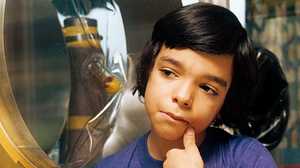The Texas Hospital Team

Many people cared about and cared for David Phillip Vetter during his life. He received his medical care at Texas Children's Hospital, part of the Texas Medical Center in Houston and a teaching hospital of Baylor College of Medicine.
Advice on Immunodeficiency
Pediatric immunologists Mary Ann South and John "Jack" R. Montgomery had counseled David and Carol Ann Vetter following the death of their first son as a result of his severe combined immunodeficiency (SCID), a lack of immune system. Raphael Wilson, a professor of experimental biology, joined the counseling sessions and told the Vetters about his theories of germ-free births. If a child with SCID were safely transferred into an isolation bubble without exposure to germs, doctors would be able to perform a bone marrow transfusion on the infant that would generate the white blood cells necessary to fend off disease. When the Vetters became pregnant with their second son, they looked to this trio for assistance with the birth.

No Match
The team, with obstetrician L. Russell Malinak, delivered David Phillip Vetter into his first isolator bubble. Unfortunately, the expected marrow donor, David's older sister Katherine, was not a perfect match, so a transfusion was not performed. David would live in a plastic bubble, in the care of doctors, for the rest of his life.
Ethical Questions
Almost immediately, questions arose on the ethical implications of David's situation, in the academic press and at the hospital. Hospital chaplain Raymond Lawrence called for a conference to discuss the situation. In February 1975, when David was three and a half years old, about 30 people convened in a conference room. "One day he will take a look at himself and decide he doesn't want to be in there till he gets to be 15 years of age," chaplain Robert Main predicted. Lawrence was frustrated at the intransigence of the doctors' position and the fact that the conference came four years too late. "The team that did this didn't think through this very well," he told an interviewer recently. "They didn't consider what would happen if they didn't find an immediate cure. They operated on the assumption that you could live to be 80 years old in a bubble, and that would be unfortunate but okay."

Reliance on Doctors
In his early years, David spent as much time at the hospital as he did at home, leading to some confusion over his care, but also bonding him with his doctors. Wilson, a lay brother of the Catholic Order of the Holy Cross, had baptized David and was his godfather. Wilson visited David whenever he was working in the hospital, but that was not every day. When David was four, Wilson spent some time out of the country and explained over the phone to the boy that he would not be coming for a few more days. David made no comment but, as attested to in an academic article, "[w]ithin the hour ... he deliberately punctured the floor of the isolator in at least half a dozen places." Less than a year later, when Wilson had a heart attack that exposed his mortality, David smeared feces all over the inside of his bubble; a psychologist believed his actions betrayed his great fear of abandonment.
New Team
He was right to be worried. Doctors South and Montgomery had already taken jobs elsewhere; Wilson left Houston shortly after recovering from his heart attack. Dr. Buford Nichols took his place from March until September 1978, when Doctors William Shearer and Ralph Feigin took over David's care.
Psychologist-Friend
Among David's best friends at the hospital was Mary Ada Murphy, at the time an instructor at Baylor working on a Ph.D. in psychology. They first met when she gave David psychological and intelligence tests as a favor for her mentor. She befriended the boy and spent more of her personal time with him, often working on her thesis in his room. David confided his fears to her. South told an interviewer, "As I recall, [Murphy] picked up on a lot of developmental things about him that nobody wanted to face."
One View of David's Views
Murphy remembers David voicing the concerns that the hospital chaplains had warned about. "Why didn't they do something to me before I was old enough to care?" she recalls him asking. "When I was three, I wouldn't have cared. When all this mess started, didn't they ever think about or realize that they were dealing with my life? They made decisions without ever thinking about anything except what they wanted to do, not about all this crap that I'm in." David's family disputes much of Murphy's account of David's story and claims that the dialogue she remembers sounds more like Murphy than David.
New Treatment Proposed
Doctor Feigin was coming to a similar conclusion around 1980. A psychiatric report indicated that David was increasingly unhappy and, in the worst case, might leave the bubble on his own. Feigin suggested removing David from the bubble under controlled conditions, and treating him with antibiotics as infections occurred. The hope was that David's immune system would spontaneously generate itself as had happened in other cases; but more likely, David would die. After consulting with South, Montgomery and Wilson, the Vetters chose to wait.
Best Chance at a Cure
Finally, in 1983 David's past and current doctors agreed that an unmatched bone marrow transfusion would be David's best chance at a cure. In the event, complications from the transfusion infected David and he died in February 1984.







